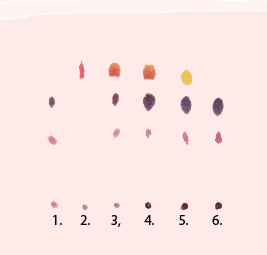Paper Chromatography in Crime Scene Investigations

Paper Chromatography in Crime Scene Investigations
This activity introduces the process of paper chromatography and why scientists use it in crime scene investigations. A crime has been committed. It is the students; task to perform a chromatography to identify the killer. Students will separate the pigments from artificial urine samples that were collected from the suspects. For each sample, the student will calculate the Rf value, which can be compared with known chromatography results obtained from the urine found in the crime scene.
Day 1 – Engage students by asking questions:
(1) What kind of evidence can be found in the crime scene?
(2) How are samples collected from the crime scene?
(3) What are pigments?
(4) What are dyes?
(5) What is the difference between them?
(6) Where are dyes found?
Present concepts about paper chromatography
Ask questions:
(1)What is chromatography?
• the separation of mixtures into individual components (or parts)
(2) How do scientists use chromatography?
o To find out what components are in a mixture, such as:
• pollution in a stream
• inorganic ions in grape juice
• drugs in a urine sample
(3) How can paper chromatography be used to identify plant pigments?
• Rf values – scientists calculate Rf values to determine what molecules are in a given substance
• Rf = distance traveled by pigment divided by the distance traveled by solvent
• The resulting values can be compared to a chart of known values.
• In discussing the “solvent front and solute front”, which are the points to which the pigment and solvent have traveled.
Working in pairs or groups of 2, students conduct the lab according to the instructions in TI-Nspire calculators. Ample time should be given for the students to try and figure out on their own how to go through all of the steps.
Students observe the development of the chromatography paper, and discuss with the lab partners what they are seeing, and which pigments they think they have separated just based on color. The students will calculate the Rf values. These can be compared to known values from the crime scene.
Students discuss their results with each other, calculate Rf values, and answer the questions at the end of the lab activity. Students then take a quiz to evaluate the understanding of the process.
Additional Files
Before the Activity Files
Vernier EasyData,Vernier EasyLink and Vernier EasyTemp are registered trademarks of Vernier Science Education.

